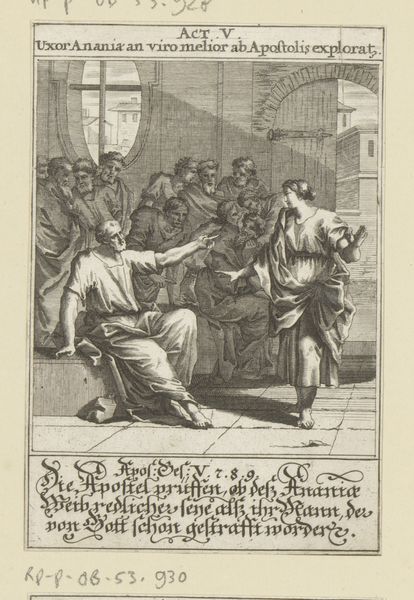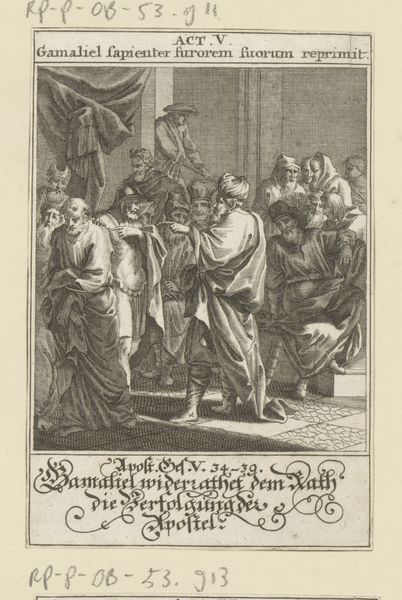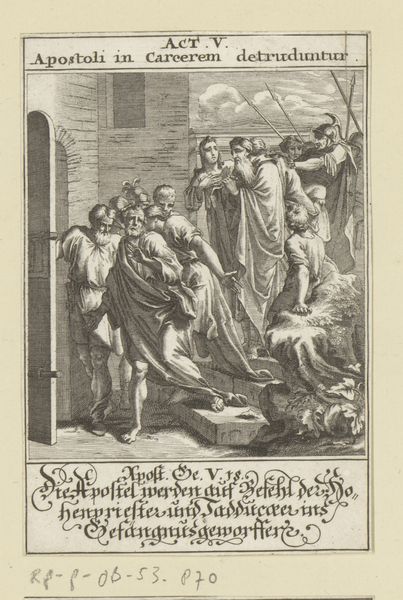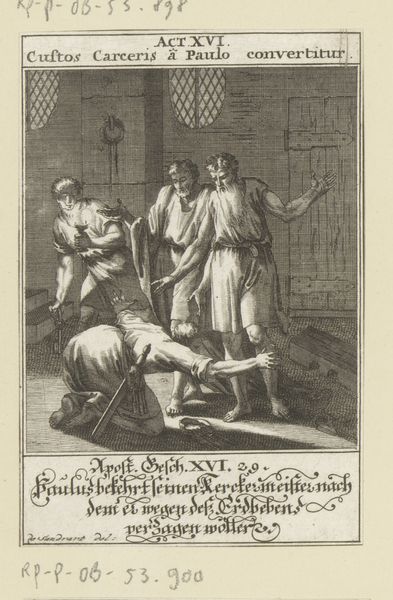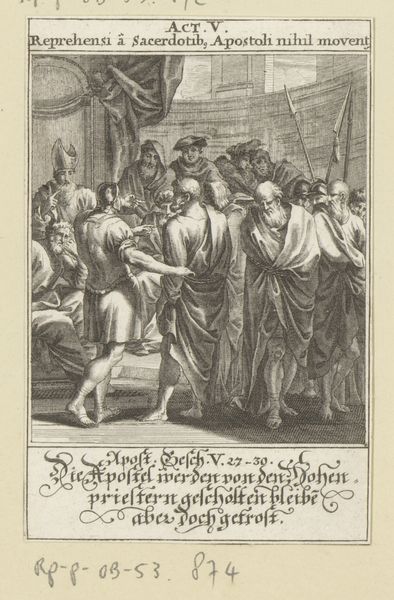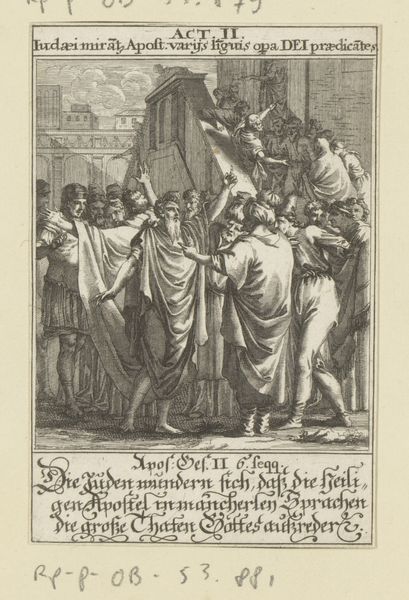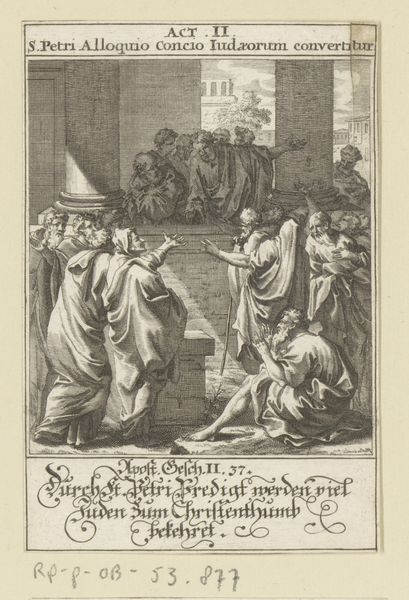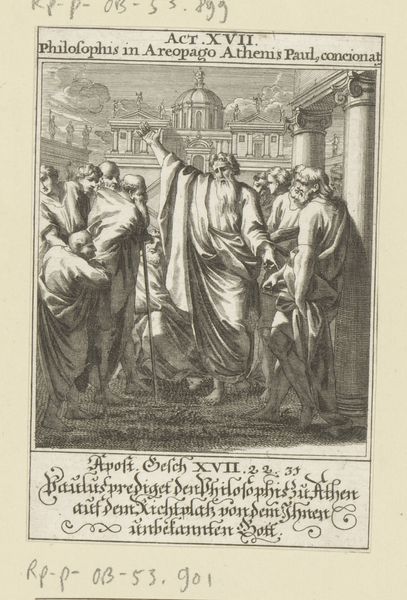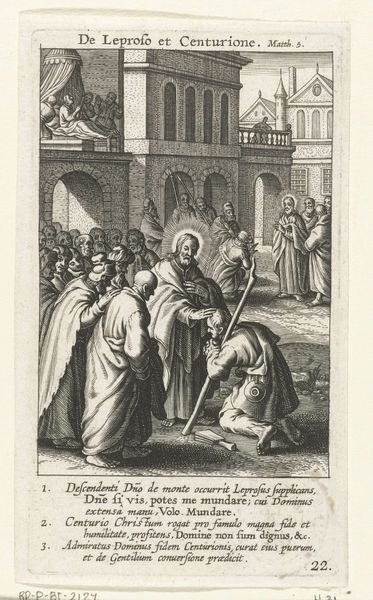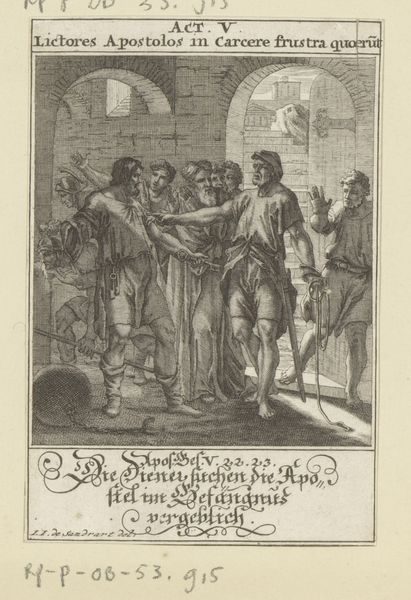
print, engraving
#
baroque
# print
#
old engraving style
#
traditional media
#
figuration
#
history-painting
#
engraving
Dimensions: height 121 mm, width 80 mm
Copyright: Rijks Museum: Open Domain
Editor: Here we have an engraving titled "Apostel Paulus predikt in Antiochië het evangelie," or "Apostle Paul Preaching in Antioch," created in 1697. It appears to be made using traditional printmaking techniques. I’m immediately struck by how much detail they packed into such a small image. What stands out to you when you look at this work? Curator: It's fascinating to consider this print as a product of its time, where printmaking served a crucial function in disseminating religious and historical narratives. The material itself – the paper, the ink, the engraved plate – each played a role in mass production and distribution. Were these prints aimed at wealthy collectors, or a broader segment of the population hungry for religious iconography? The wear and tear on surviving examples, such as this one, might indicate frequent handling and display. Editor: That’s interesting! I hadn't thought about the production aspect in distributing these religious stories. It makes the image more of a…tool, than just an artwork. Does the technique tell us anything else? Curator: Absolutely. Consider the engraver's skill, transforming a metal plate into a vehicle for disseminating theological ideas. Each precisely etched line serves to reproduce an idealized scene but also required a great amount of labor and technical skill. In this regard, it transcends pure religious illustration. Editor: So by understanding how it was made and distributed, we can better understand the social impact it had? Curator: Precisely. It provokes us to reconsider the hierarchy between art and craft. To ponder who controlled production, consumption, and ultimately, the interpretation of scripture itself. It encourages thinking beyond aesthetic merit to cultural meaning within a complex framework. Editor: I guess I had only seen it as an illustration. Thinking about it as a mass-produced object that affected society gives me a new appreciation for what it meant to people at the time. Thanks!
Comments
No comments
Be the first to comment and join the conversation on the ultimate creative platform.
